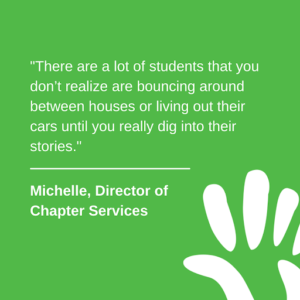SPRINGFIELD, Mo. – Care to Learn is a non-profit in Springfield that partners with school districts to help children obtain living necessities and stay in the classroom without outside distractions derived from poverty.
During the fall of 2007, now retired Executive Director of Care to Learn Morey Mechlin gave a presentation at a Chamber of Commerce meeting to show high poverty rates within local school systems. Doug Pitt was in attendance and felt moved by the presentation, so he founded Care to Learn to ensure children could attend school without worrying about life’s necessities.
According to Care to Learn, 19.2% of Missouri children are currently living in poverty and 15.2% of Missouri children are food insecure.
There are currently 38 Chapters of Care to Learn in the state of Missouri, and Director of Marketing & Communication Andrea Harp says each chapter is customized to fit that specific school district’s needs. The program also allows children to be discreet when receiving items in order to avoid embarrassment from their peers.
Hunger, health and hygiene are Care to Learn’s main priorities and according to Harp, simple necessities like a coat, a meal or a pair of glasses can stand between a child’s ability to learn.
“We’re meeting a need that day,” Harp said. “There’s no red tape for Care to Learn and that’s one of the critical components to how we operate and why we do what we do so well. That one thing is preventing that child from learning that day and it’s an emergent need. If it can’t be met that day, there’s no learning that’s going on.”
Chapters are financially backed and supported by the chapter’s own community. After Care to Learn partners with a school district, they first identify their needs together and then create their chapter. The organization will then provide each chapter with the tools to create sustainable fundraising strategies in order to get their community interested and ready to provide funding.

“In order for a Chapter to thrive in a local community and school district, we do look for a community to be invested in the mission of Care to Learn,” said Pitt. “This looks different for each Chapter because every community we serve is vastly different. The timeline also varies from Chapter to Chapter, because the needs of the school district and community are unique due to the size and the scope of student needs vary too.”
In 2020-2021, Care to Learn served 54 percent of hunger related needs, 37 percent of hygiene related needs and 9 percent of health related needs. The group also helped meet 1 million “needs” in 2019 alone. Those interested in donating or getting involved with Care to Learn can visit their website here.

